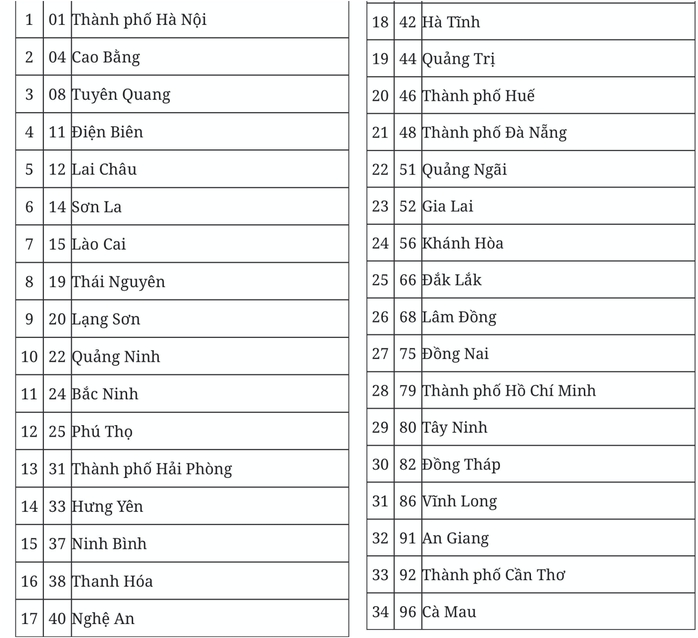The Ministry of Finance is currently seeking public feedback on a draft Decision by the Prime Minister regarding the issuance of a List and Codes for Vietnam's Administrative Units.
According to the Ministry, the current list and codes for administrative units were issued by the Prime Minister in 2004 under Decision No. 124/2004/QĐ-TTg. This list has since been managed and updated by the Ministry of Finance (General Statistics Office), based on resolutions issued by the National Assembly Standing Committee regarding changes in administrative boundaries.
Since its issuance, the list has played an important role in administrative management, planning, and statistical work.
However, given the ongoing implementation of the national plan to restructure administrative units at all levels - reducing the number of provincial units from 63 to 34; removing the districts; and reducing the number of commune-level administrative units from 10.035 to 3.321 - adjustments to the current list and coding system are necessary to reflect the new administrative structure.

Proposal of the list and corresponding codes for 34 provincial-level administrative units
According to the draft (Appendix I), the new list includes 34 provincial-level administrative units, each assigned a two-digit code.
The coding principle is to sort administrative units geographically from North to South, West to East, using boundary points at geographic extremities and incorporating regional divisions as a basis for classification.
Nationwide, Hanoi is placed first; the remaining provinces and cities follow the geographic ordering above. Within each province, the administrative unit housing the People's Committee headquarters is listed first; the rest are ordered by urban areas before rural areas, North to South, West to East.
Principles for Coding Upon Changes
- Provincial Level:
. If a province is split, the one with the People's Committee headquarter in the old location retains its current code; the newly formed province receives a new code. Commune-level codes within those provinces remain unchanged.
. If provinces are merged, the new province adopts the code of the one where the People's Committee headquarter is located; the code of the other province is retired and will not be reassigned. Commune-level codes remain unchanged.
- Commune Level:
. If a commune is split, the one with the headquarter in the original location retains its current code. The other receives a new code.
. If communes are merged, the commune with the People's Committee headquarter retains its code, and the other's code is retired permanently.
. If a commune-level unit is transferred to a different district, its code remains unchanged.
. If an administrative unit is renamed or converted between rural and urban, its code remains unchanged.





Bạn không thể gửi bình luận liên tục. Xin hãy đợi
60 giây nữa.